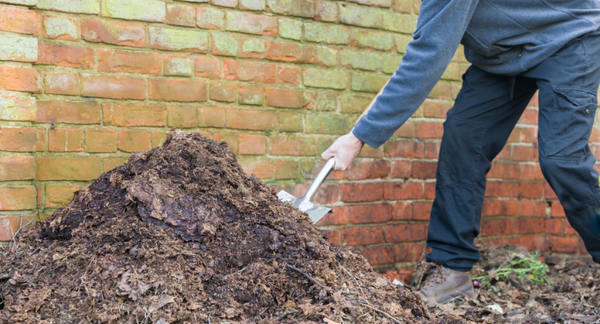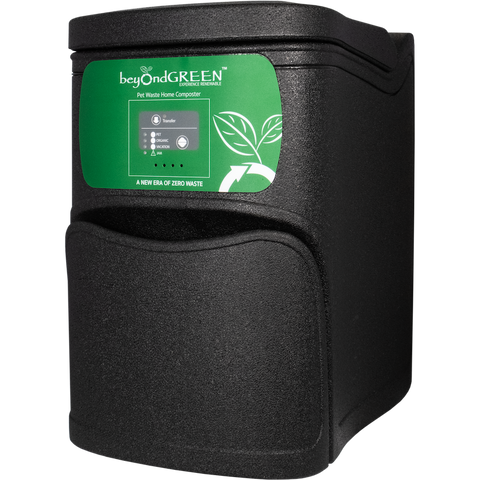Composting is a great way to reduce waste and create nutrient-rich soil for your garden. However, sometimes compost gets too wet, causing issues like bad odor, slow breakdown, and harmful bacteria growth. In this blog post, we will discuss ways to fix wet compost easily.
Assessing the Wetness of Your Compost
Signs of Overly Wet Compost
Compost is naturally a very moist material. However, there is a point where compost is too wet. Here are a few signs to watch for that might indicate you need to take action.
- Foul odor
- Slimy texture
- Excessive water pooling at the bottom of the compost bin
Testing Compost Moisture Levels
Take a handful of compost and compress it. If water starts dripping out, it means the compost is too wet. If the compost crumbles in your hand, then the compost is too dry. The ideal moisture level is when the compost holds its shape but doesn't release water.
Strategies for Fixing Wet Compost
Turn & Aerating The Compost
If you have a compost pile, you can turn and aerate your compost to solve this issue. To accomplish this, you will want to follow these steps:
- Use a pitchfork or shovel to turn the compost pile, allowing air to circulate and excess moisture to evaporate.
- Add dry, carbon-rich materials such as shredded leaves, straw, or sawdust pellets to absorb excess moisture.
Turning the pile will also help to ensure that things are breaking down properly and evenly. This is because turning it will prevent poor aeration which leads to moisture in your compost.

Adding Absorbent Materials
In some cases, you may be able to get away with just adding some absorbent materials. Here are some materials to use and avoid:
- Incorporate absorbent materials like shredded newspaper, cardboard, or dry grass clippings into the compost to soak up excess moisture.
- Refrain from using glossy or coated papers. These are often covered with chemicals that are not safe for consumption or can alert the composting process.
Adding these absorbent materials will balance the moisture and keep down the water content throughout the composting process. You can do this as often as necessary to prevent soggy compost.
Adjusting the compost bin or pile
If moisture is pooling at the bottom of your compost pile you may want to consider these ideas as well:
- If using a compost bin, ensure it has proper drainage holes to allow excess water to escape.
- If composting in a pile, consider creating a drainage layer at the bottom using twigs or straw.
Ensuring that excess moisture is able to drain out of the pile is extremely important for preventing high moisture levels.
Preventing Future Wet Compost
Properly Balancing Green and Brown Materials
Maintaining the right green to brown ratio in your compost pile is crucial for successful composting. The green materials provide nitrogen and the brown materials provide carbon, which together create a balanced environment for microorganisms to break down organic matter into nutrient-rich compost.
Here are some tips for achieving and maintaining the proper green to brown ratio:
- Understand Green and Brown Materials: Green materials include kitchen scraps (fruit and vegetable peels, coffee grounds), fresh yard waste (grass clippings), and manure. Brown materials include dried leaves, straw, shredded newspaper, cardboard, and woody materials. These are rich in carbon.
- Aim for a 2:1 Ratio: A general guideline is to maintain a ratio of roughly 2 parts brown materials to 1 part green material by volume. This provides a good balance of carbon to nitrogen.
- Adjust as Needed: If your pile is too green, add more brown materials to balance it out. Dried leaves, straw, or shredded cardboard are good options. If your pile is too brown and not decomposing, add more green materials like kitchen scraps or fresh yard waste.
- Rotate layers: When adding materials to your compost bin, alternate layers of green and brown materials. This helps achieve a balanced mix as you build the pile.
Monitoring Moisture Levels Regularly
Regularly check the composition of your compost. If it starts to smell bad, becomes slimy, or doesn't heat up, it may be too high in green materials (nitrogen). If it's not breaking down quickly enough, it may need more green materials.
Covering the compost pile
If you live in areas with high levels of moisture, you will want to cover your compost pile. Here are a couple of things to consider when covering your pile:
- Use a cover that will allow some air to escape with is semi-water resistant. This will allow moisture to escape your compost pile while preventing rainwater from pooling inside. A tarp with small holes or a burlap cover work well.
- Secure the cover to prevent it from blowing away.
beyondGREEN
 At beyondGREEN, we want to ensure that you are able to excel in composting and living a green lifestyle. We have electric composters available as well as sawdust pellets that can help to easily maintain the moisture levels of your compost.
At beyondGREEN, we want to ensure that you are able to excel in composting and living a green lifestyle. We have electric composters available as well as sawdust pellets that can help to easily maintain the moisture levels of your compost.
Our electric composters automatically rotate your compost for your regularly to ensure optimal moisture is achieved.
We aim to create a sustainable future and we believe we can achieve this with your assistance.



0 comments